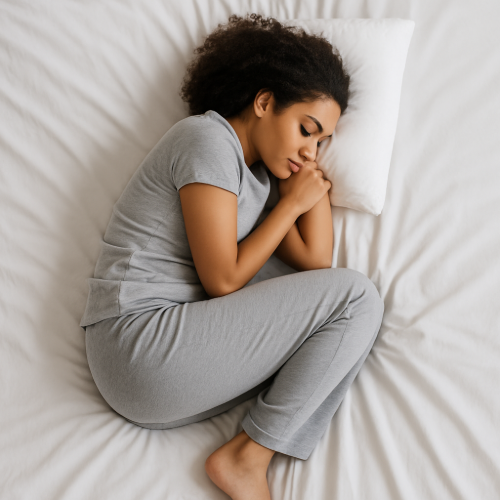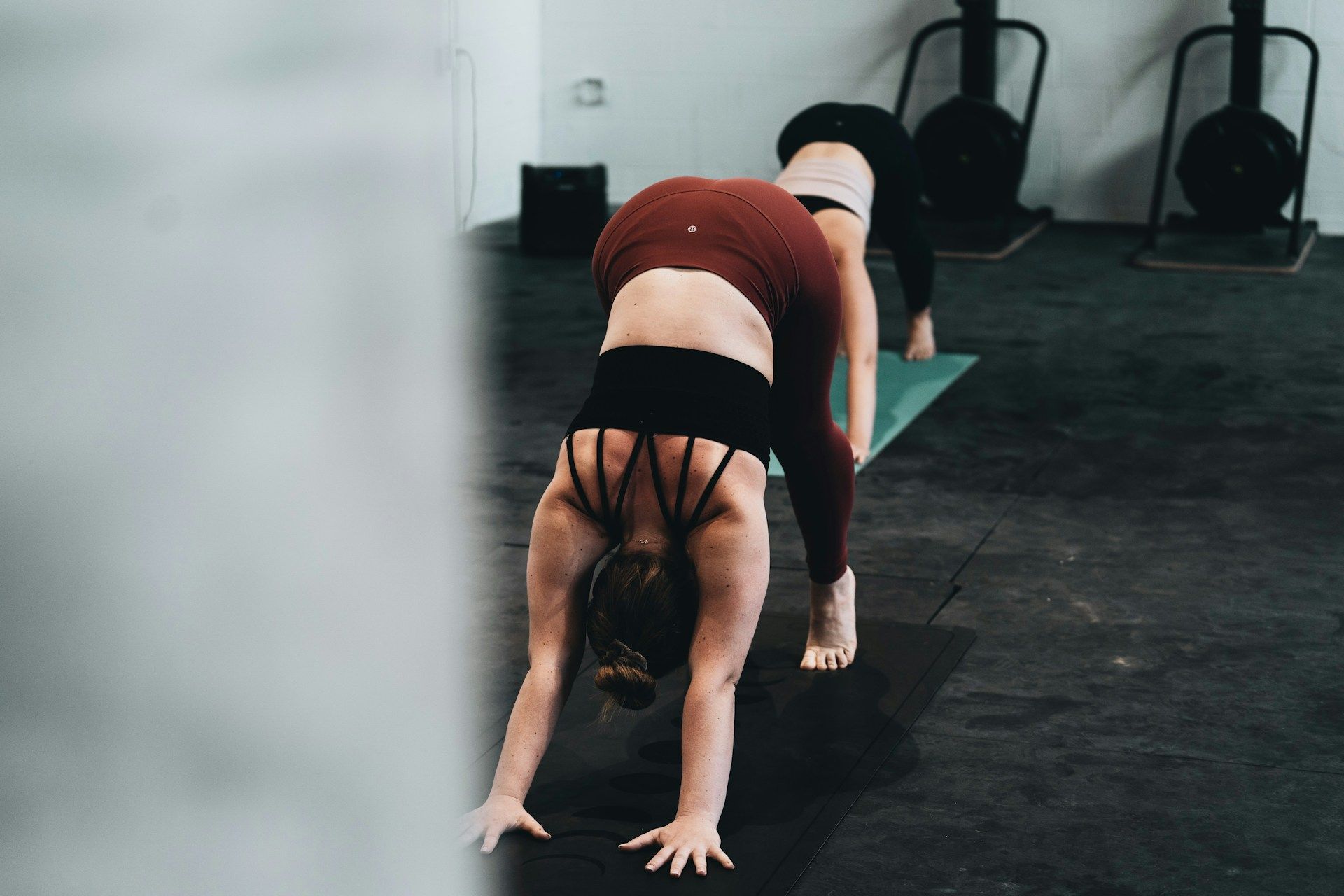How To Sleep With Piriformis Syndrome

Pain can make getting a good night’s sleep tough and if you have Piriformis Syndrome, you know that all too well.
The good news is there are ways to ease the discomfort and improve your sleep.
Piriformis Syndrome happens when the piriformis muscle, located behind the hip joint, puts pressure on the sciatic nerve. This can lead to pain, tingling, or numbness that travels down the legs and into the feet (Cleveland Clinic, n.d.).
Ready to get some real rest again? Keep reading for practical sleep tips to help manage Piriformis Syndrome.
How To Sleep With Piriformis Syndrome
You should avoid irritating the piriformis muscle while sleeping, and this can be done via proper sleep posture and correct pillows and mattresses.
Let’s review some common sleeping positions for Piriformis Syndrome:
Back Sleeping
Back sleeping is one of the best positions for managing Piriformis Syndrome. It helps keep your spine aligned and spreads pressure evenly across your body, which can ease pain and support better posture. For the best results, keep your arms at your sides and your hips level.
Pros:
Reduces leg pain caused by Piriformis Syndrome
Supports proper spinal alignment
Eases lower back discomfort
Encourages better overall posture
Cons:
Might feel uncomfortable if you're not used to sleeping on your back
Side Sleeping
Side sleeping is one of the most popular sleeping positions, and when you use proper sleep posture, it’s also great for pain relief and better sleep quality.
Pros:
Can reduce Piriformis pain
Offers a comfortable sleep
Keeps your back straight
Cons:
It’s easier to revert back to an unhealthy position
If not done right, it can cause more pain
Sleeping With Knee Support
If you prefer side sleeping, adding a pillow between your knees can give you extra support and help align your pelvis. This small adjustment can reduce pain and make it easier to stay comfortable through the night. For even better support, consider using a pillow designed specifically for lower back or hip pain.
Pros:
Eases Piriformis-related leg and hip pain
Helps relieve lower back pressure
Offers better support than sleeping without a pillow
Cons:
Regular pillows can shift during the night if they’re not designed for this use

Best Pillows For Piriformis Syndrome
Studies have proven that a specialized back care pillow and other pain management techniques significantly reduce pain and improve sleep (Prommanon et al., 2015).
So, choosing the right bedding can be a dealbreaker for Piriformis pain.
Here are some of the top bedding supplies to consider.
Memory Foam Pillows
A specialized memory foam pillow helps to keep your posture aligned as you sleep while keeping pressure off your neck and back. Piriformis pain often manifests in leg pain, but don’t disregard a memory foam pillow because it targets back and neck pain.
These pillows ensure your whole body is aligned and pain-free.
The Groove Pillow is a memory foam pillow designed to relieve pain and improve sleep by promoting a neutral spinal alignment. Perfect for anyone ready to relieve Piriformis pain through a healthy sleep position.
Shop Memory Foam PillowLower Back Pain Relief Pillows
If you’re a side sleeper, adding a lower back pain relief pillow between your knees takes the pressure off your hips and thighs for a more comfortable and pain-free night of sleep.
The Groove X Knee Pillow is a specialized lower back pillow that provides fast-acting relief for various problems, including knee pain, hip pain, and Piriformis Syndrome pain.
Shop Knee PillowMattress Toppers
If you want to improve the comfort of your mattress without buying a new one, a mattress topper is the perfect solution for you. High-quality toppers with special materials (e.g. latex or memory foam) offer pressure point relief and overall better back support.
How To Treat Piriformis Syndrome
Managing Piriformis Syndrome during the day is key to getting better sleep at night.
To ease pain and improve symptoms, try using ice or heat packs on the inflamed areas, taking over-the-counter pain relief like paracetamol or ibuprofen, and doing gentle stretches to support the piriformis muscle, leg bend stretches are a good place to start.
Professional massages, physical therapy, and making sure you rest when needed can also make a big difference.
Pairing these daytime treatments with a supportive pillow designed for Piriformis Syndrome can help you stay more comfortable both day and night.

When To Seek Professional Help
If your Piriformis Syndrome pain worsens suddenly or doesn’t get better after a few weeks, it’s time to seek professional medical help.
Final Words
Piriformis Syndrome is uncomfortable, but with the correct management, sleeping position, and sleep aids, you can increase your comfort and achieve a better night of rest.
Always remember, if your pain doesn’t go away or worsens, you should visit a doctor for a professional assessment.
Start sleeping without pain today. Explore the Groove Pillow bestsellers here.
Shop All Memory Foam PillowsREFERENCES
- Cleveland Clinic. (n.d.). Piriformis Syndrome: Symptoms, Causes and Treatment. [online] Available at: https://my.clevelandclinic.org/health/diseases/23495-piriformis-syndrome.
Prommanon, B., Puntumetakul, R., Puengsuwan, P., Chatchawan, U., Kamolrat, T., Rittitod, T. and Yamauchi, J. (2015). Effectiveness of a back care pillow as an adjuvant physical therapy for chronic non-specific low back pain treatment: a randomized controlled trial. Journal of Physical Therapy Science, 27(7), pp.2035–2038. doi:https://doi.org/10.1589/jpts.27.2035.

